Triangle Strategy demo sets the scene for all-out war and leaves me wanting more
Opinion: The Triangle Strategy demo is a tantalizing tease of what’s to come
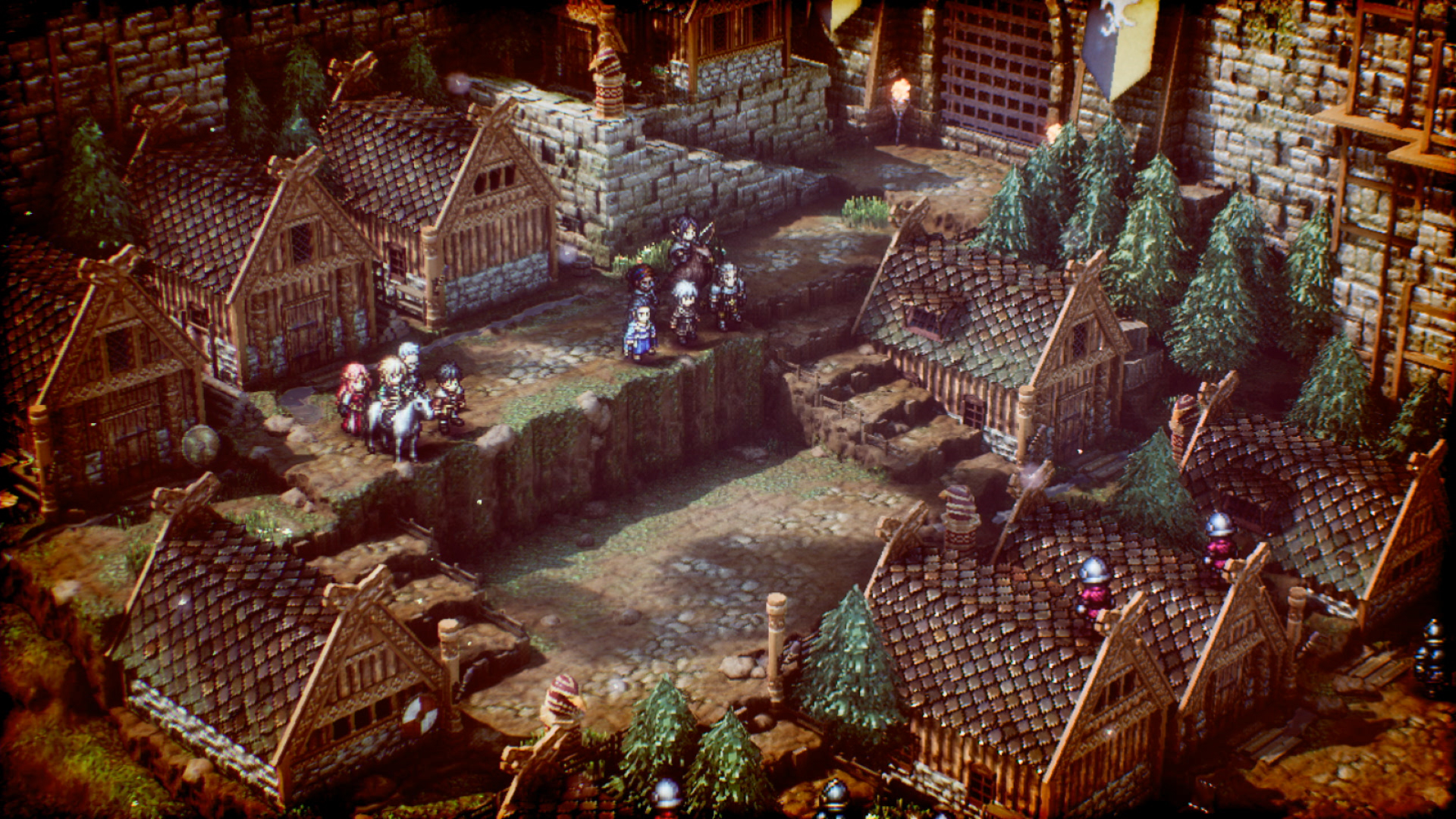
Announced during last night’s Nintendo Direct, the Triangle Strategy demo lets you play through the first three chapters of Square Enix’s turn-based tactics ‘em up, and spiritual successor to 2018’s Octopath Traveler. Better still, your progress in the demo will transfer into the full game when it releases on March 4.
If you’ve been drawn to Triangle Strategy’s lovely 2.5D visuals, which see 2D characters fight it out in a 3D world, the demo offers a tantalizing glimpse of a world on the brink of war.
You step into Triangle Strategy’s world, Norzelia, at a critical point in its history. Split into three kingdoms - Glenbrook, Aestrost, and Hyzante - the land is in an uneasy truce. Following decades of war, the factions are working together to build a mine from which they’ll all share the profits. Tensions between the old enemies are running high, and peace is on a knife-edge.
While you don’t play for any of the factions directly, you take control of Serenoa, the heir to House Wolfort, a key ally of Glenbrook. In the game’s opening chapters, you meet with the representatives of the different factions, sizing up their generals and leaders, and getting the lay of the land. While the preview doesn’t take you up to the point of war, you can just sense it’s coming, and it gives an air of foreboding to all your interactions.
There are only three battles across the opening chapters. I spent more time talking to the characters in my party and the factions' leaders than I did fighting. I hope this pays off later in the game when war breaks out and I’ll inevitably face some of these people in battle.
It’s all about positioning
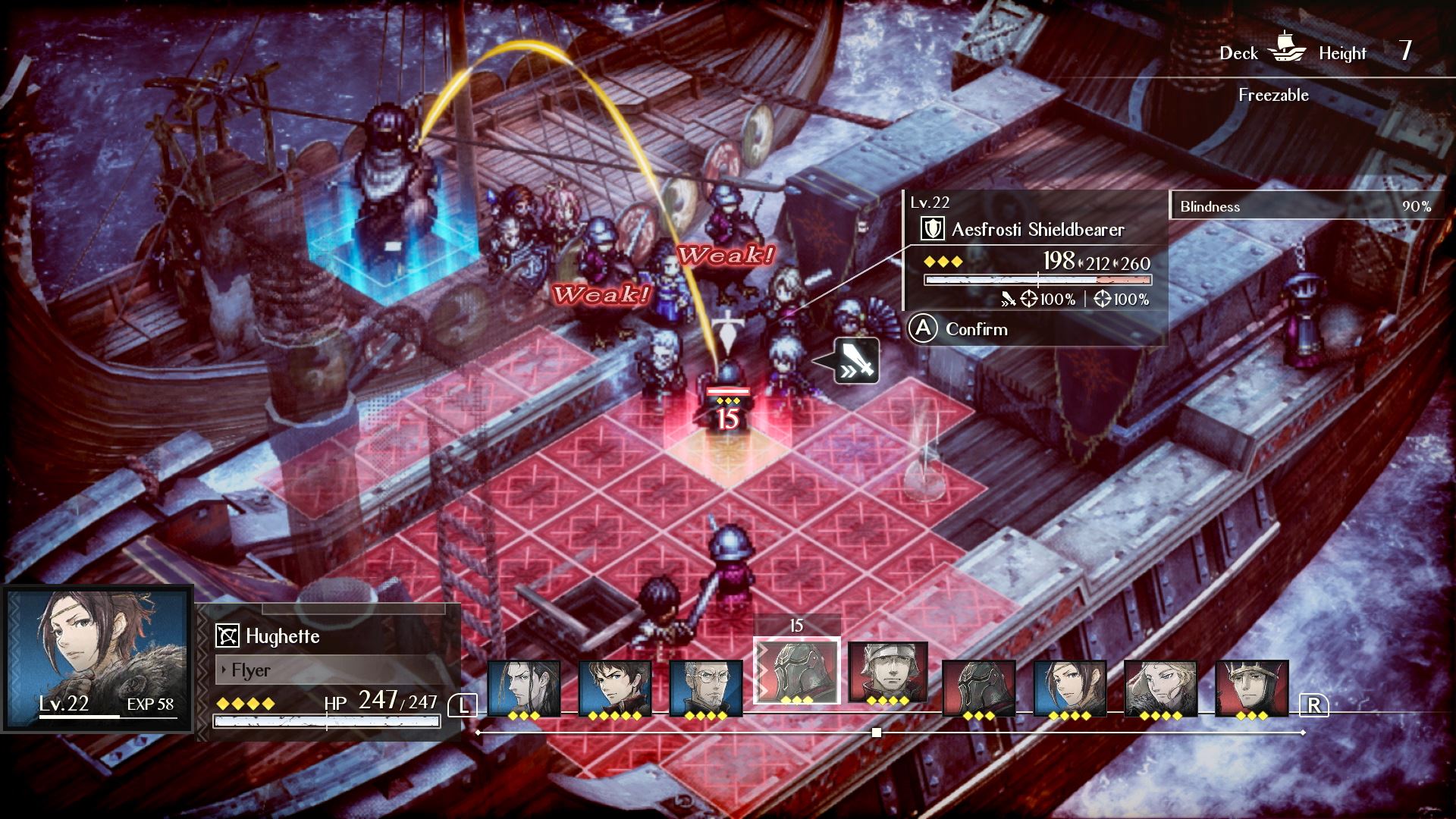
It’s a shame there were so few combat encounters in the opening chapters of Triangle Strategy because it’s here where the game really shines.
Battles are turn-based and set across a simple square grid. You and the enemy take turns to move and act with a single unit, the turn order determined by each character’s speed. A character can move and perform one action each turn - this could be an attack, using an ability, or activating an item. So, familiar to anyone who’s played turn-based tactical games in the past.
Get daily insight, inspiration and deals in your inbox
Sign up for breaking news, reviews, opinion, top tech deals, and more.
Where the team behind Triangle Strategy looks to be placing an emphasis is positioning. The battles in the early chapters aren’t too tricky. When I lost units, it was always because I was careless with where I left them at the end of their turn.
For instance, in the second battle, a friendly tournament between the three factions, I sent my knight, Prince Roland, straight into action. A mounted unit, Roland has a larger movement range than his allies, and his lance can strike two enemies at once, so long as they stand in a line. However, left exposed after his attack, the AI boxed him in over a series of turns. Surrounded, he couldn’t move and they cut him down in short order.
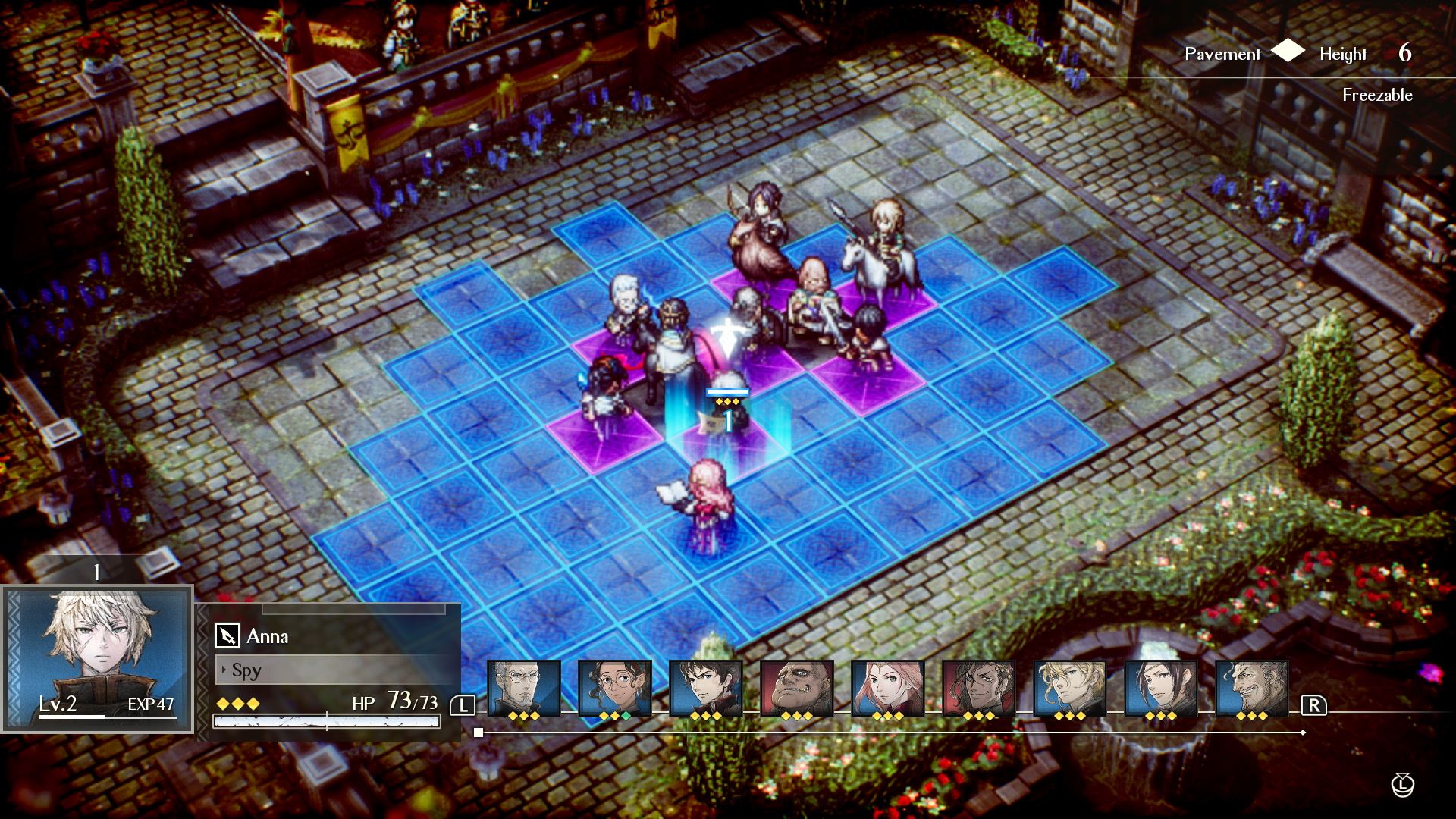
When I lost units, it was always because I was careless.
They made even shorter work of my knight thanks to follow-up attacks. If you can sandwich an enemy between two of your units, you can tag-team them. When one unit attacks the enemy in the center, the unit on the other side gets to attack them as an automatic action. This follow-up attack doesn’t use up their turn or any of their energy. Of course, as poor Roland found out, your enemies can use this ability against you, too.
I also suspect drawing up battle lines will become key to later battles. Units can’t pass through each other on Triangle Strategy’s battlefields. So, if you want to keep your vulnerable ranged and caster units safe, you’ll want to have an unbroken wall of troops in front of them. Or, at least, a line that will use up your enemy's movement points to navigate around it.
There are only a few battles in the opening chapters and they feel like introductions to the mechanics of Triangle Strategy’s combat. Still, it left me wanting to see how challenging they will become in the later game.
Choices with consequence
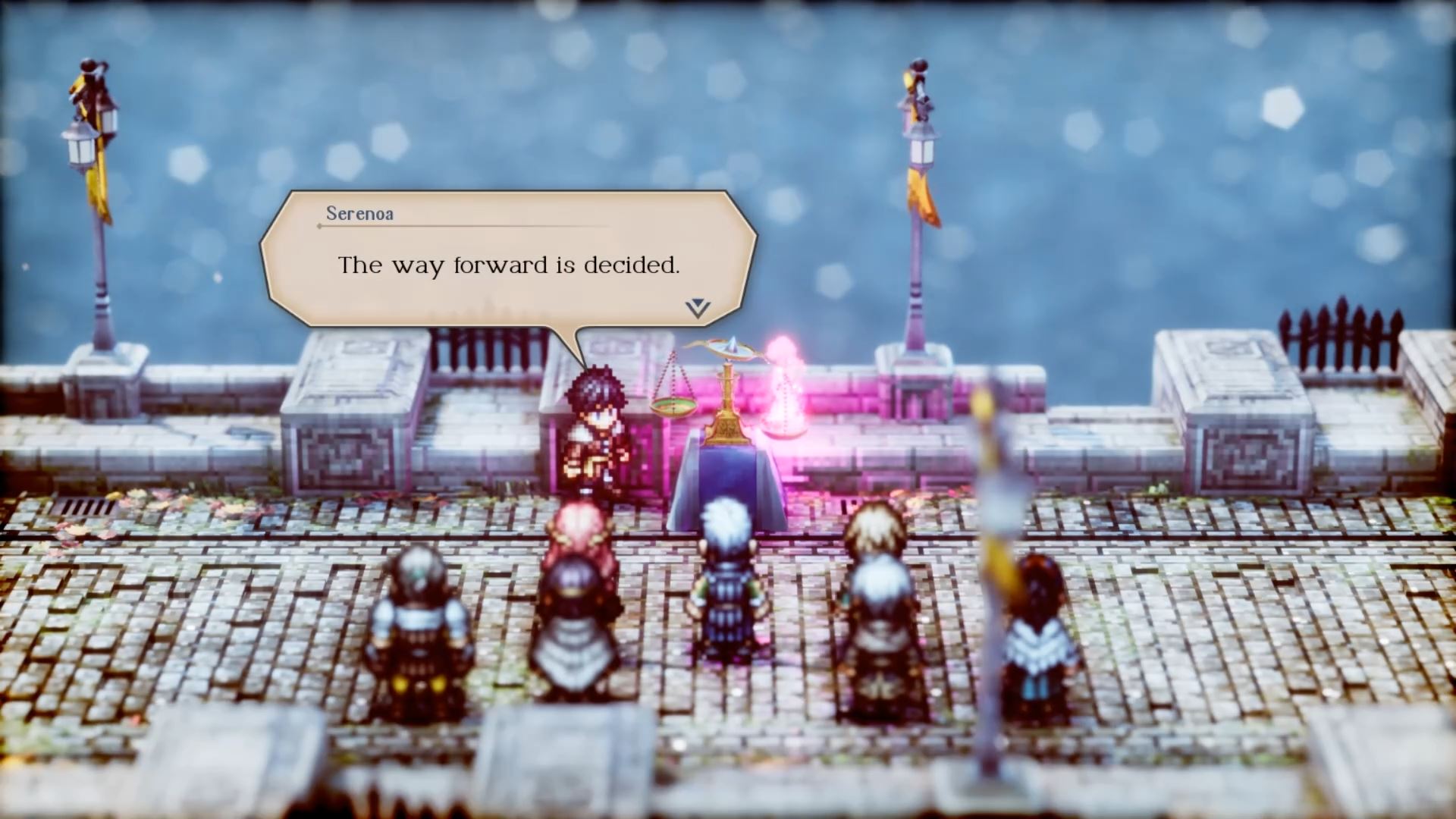
Triangle Strategy has a branching campaign but, in an unusual move, you don’t have direct control over which path you take.
As you talk to characters and explore the game’s world, learning about the lore of the different factions, you’ll sometimes see a notification appear in the top right-hand corner of the screen. It could be a note - like a snippet of conversation about the Hyzantian ice mages - or it could be an alert that Serenoa’s changed his convictions.
Like Telltale’s adventure games, as you move through the world and make choices in Triangle Strategy, you quietly define who Serenoa is to the characters around him. Dialogue options are invisibly tagged with one of three different alignments: Utility, Morality, and Liberty. The alignments appeal to different characters, and you will gain or lose party members based on how you lean.
At moments when the story branches, your alignment comes into effect. You are presented with two paths, but it is your party who decide which one you’ll take. For example, at one point, you can become an envoy to either the people of Aestrost or Hyzante. Regardless of what you would like to do, you will go wherever the majority of your party votes. Before they cast their vote, placing a coin on The Scales of Conviction, you can try to change their minds, appealing to their character or using dialogue options opened up by the notes you can find exploring the world. Like, telling the mage in your party that they could learn from the Hyzantian ice mages, tempting them away from voting for a trip to Aestrost.
It’s not clear how impactful these branches will be, but depending on the choice above you will go to completely different parts of the world and make new allies (and enemies).
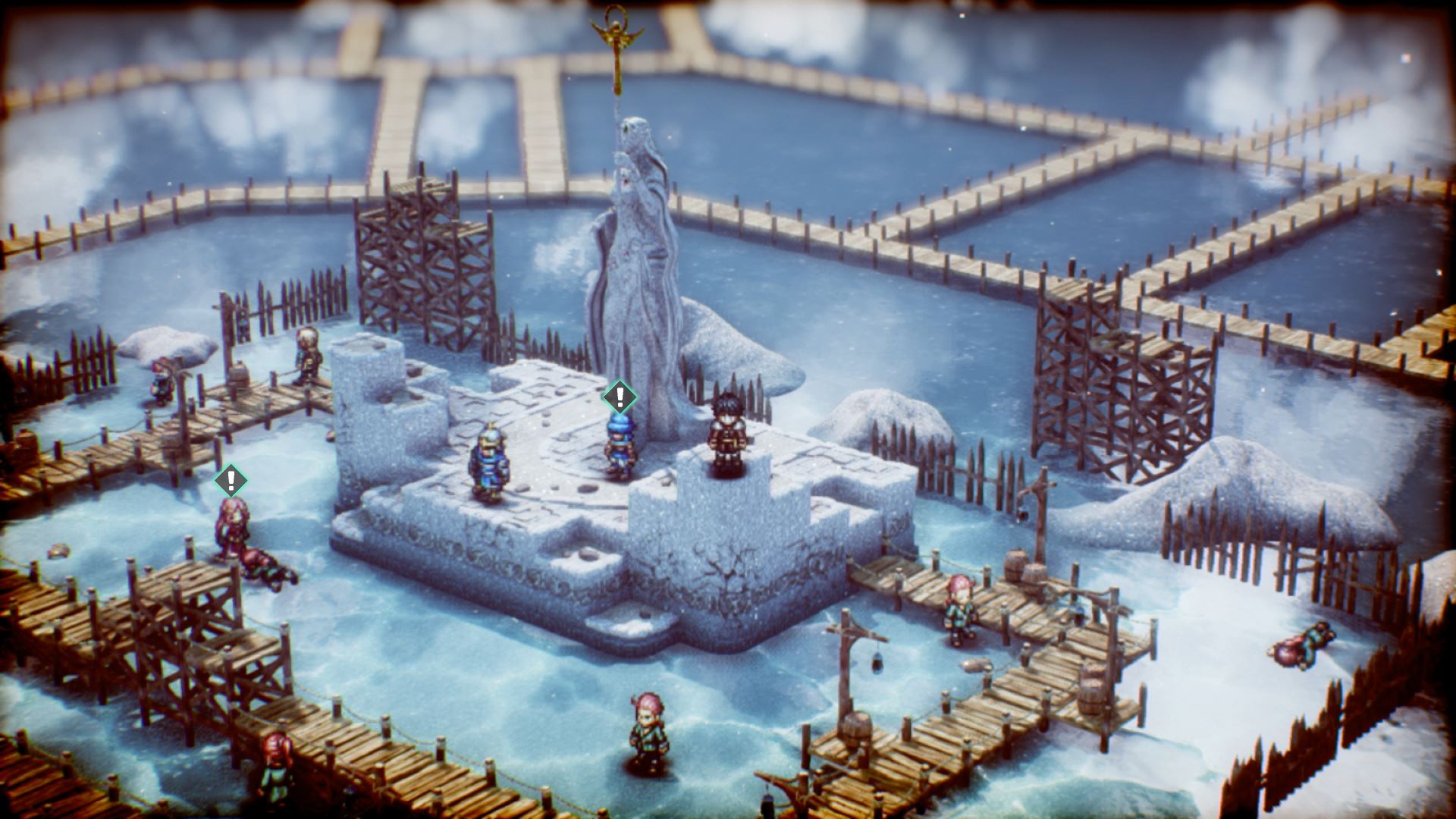
The opening chapters of Triangle Strategy give a compelling look at what’s to come. Its world is heading for war, its combat could become an excellent tactical puzzle, and its story could branch in dramatic and far-reaching ways. The demo also introduces you to the game’s skill tree and party encampment, where you can trade with shopkeepers and upgrade your equipment. Everything I played left me wanting to explore further and play more, obviously a good sign, but it’s too soon to say just how well the team has managed to pull off its ideas.
Triangle Strategy is set to release exclusively on Nintendo Switch on March 4.

Julian's been writing about video games for more than a decade. In that time, he's always been drawn to the strange intersections between gaming and the real world, like when he interviewed a NASA scientist who had become a Space Pope in EVE Online, or when he traveled to Ukraine to interview game developers involved in the 2014 revolution, or that time he tore his trousers while playing Just Dance with a developer.